The cougar is found in many different habitats throughout North America, Central America, and South America. It has more names than any other animal, such as the mountain lion, silver lion, Mexican lion, mountain screamer, red tiger, panther, puma, deer tiger, mountain cat, and catamount.
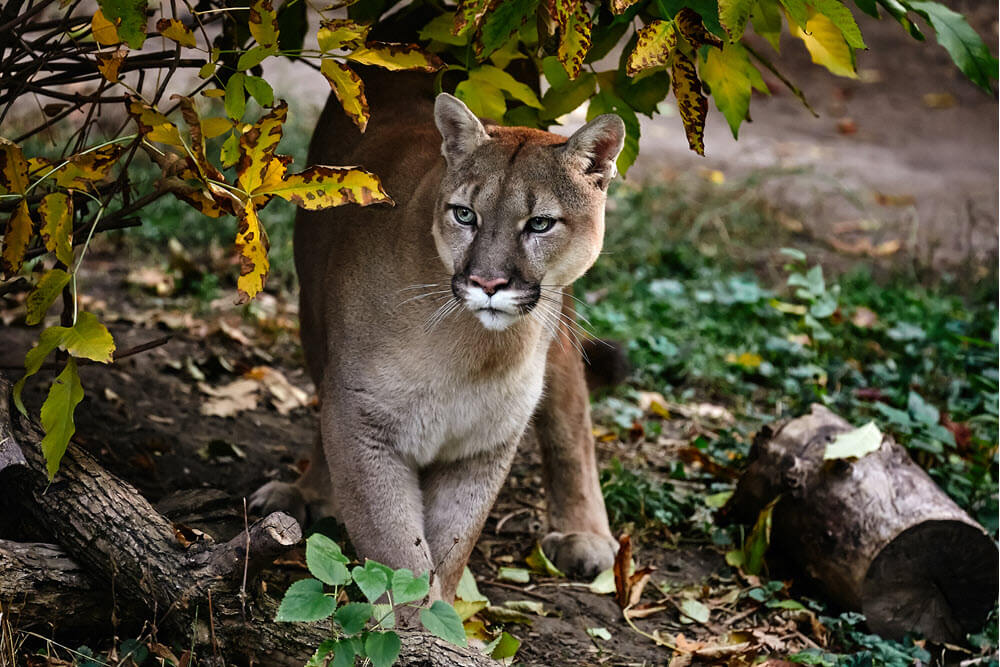
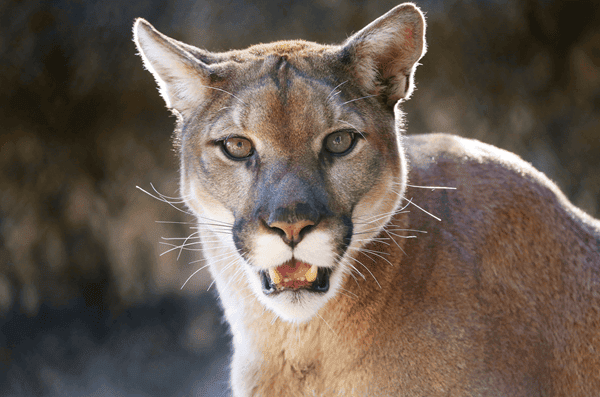
Scientific Name: Puma concolor
Conservation Status: Least Concern
Many people consider the Critically Endangered Florida panther a cougar subspecies. In Brazil and Peru, the cougar is considered Near Threatened. One of the four subspecies of cougar found in Canada has been officially listed as Endangered.
There have been descriptions of 32 cougar subspecies. According to genetic analysis, however, there are six subspecies:
- North America (Puma concolor couguar)
- Costa Rican cougar (Puma concolor costaricensis) – Central America
- Eastern South America (Puma concolor anthonyi)
- Northern South America (Puma concolor concolor)
- Central South America (Puma concolor cabrerae) – also called the Argentine puma
- Southern South America (Puma concolor puma)
The current valid subspecies are:
- Puma concolor concolor (South America)
- Puma concolor couguar (North and Central America).
Meaning of the name: From latin word “cuguar” meaning “gray wolf” or the French word “couguar” or possibly the Brazilian Portuguese word “cucurana,” or the Tupi word “sucuarna”, meaning “false deer.”
Lineage: The cougar belongs to the Puma Lineage, which includes three genera ( Acinonyx, Herpailurus, and Puma) and three species: the cheetah, jaguarundi, and cougar.
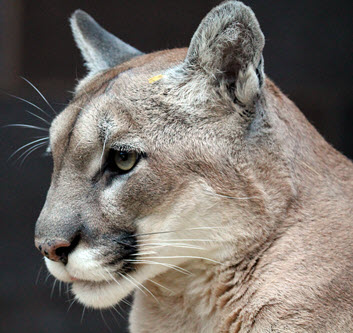
Interesting facts about cougars
- The fourth largest cat of all wild cats
- Second largest big cat in the Americas
- Has more names than any other animal (world record)
- Cougars are not apex predators (predators at the top of a food chain). In places they inhabit, bears and sometimes wolves are the apex predators.
- In comparison to its size, the cat’s hind legs are larger than any other wild cat.
- Cougars don’t roar, but they make a sound li,e a human scream.
- The body type of a cougar is similar to a domestic cat but larger.
- They are solitary animals.
- Cougars can run up to 50 mph.
- Cougars can retract their claws, which means their paw prints don’t have any claw marks.
- Cougar cubs have blue eyes and spots on their fur.
- A cougar holds the highest jump by a mammal – 23 feet.
More about the cougar
Cougars are agile wild cats that inhabit North, Central, and South America. You can find them in many habitats, including forests, shrubland, grassland, rocky areas, and deserts. In Canada, the population is estimated to be around 3,500, and 10,000 are in the western United States. Cougar populations are higher in Central and South America. The Florida subspecies (Florida panther) is around 100 individuals.
Physical Appearance – What a Cougar Looks Like
Male cougars weigh between 115 to 220 lbs. and average around eight ft. in length from nose to tail, with a range of 4.9 to 9.0 ft. Females are smaller, weighing between 64 and 141 lbs. and averaging approximately 6.7 ft. in length. Cougars that live closer to the equator are smaller than those that live further away.
The fur of the cougar is varied, from light buff to reddish-brown or even silver-grey, with a white underbelly. The tip of the cat’s tail and its ears are dark. Relative to its size, the hind legs of the cougar are larger than any other wild cat.
They can jump as high as 18 feet and horizontally up to 45 feet. The cougar can also run up to 50 mph. The cougar has long canine teeth set in muscular jaws, which enables it to grip large prey with its teeth. The cat’s teeth are incredibly sharp and can cut through bone, meat, and tendons.
Where Cougars Live
Cougars can be found throughout Canada, the United States, Central America, and South America, up to around 19,000 feet in elevation. Their habitats vary greatly, from deserts, forests, and swamps to mountain terrain. They prefer locations with dense vegetation but can also live in open habitats.
Male cougars, known for their extensive territories, can roam from 93 to 600 miles, while females, with their more compact territories, roam between 65 and 310 miles.
Countries where you can find cougars: Argentina, Belize, Bolivia, Brazil, Canada, Chile, Colombia, Costa Rica, Ecuador, El Salvador, French Guiana, Guatemala, Guyana, and Honduras. Mexico, Nicaragua, Panama; Paraguay; Peru; Suriname; United States; Venezuela
Cougars in Florida – The Florida Panther
The Florida panther, a subspecies of cougar, is native to the swamps, forests, and prairies of South Florida, primarily found in areas like the Everglades and Big Cypress National Preserve.
These large wild cats have a sleek, tawny coat, muscular build, and a long tail. They can weigh up to 160 pounds.. As an apex predator, they play a critical role in maintaining ecosystem balance by preying on deer, hogs, and smaller mammals. Critically endangered, with an estimated population of 120 to 230 adults, the Florida panther faces threats from habitat loss, vehicle collisions, and genetic challenges, making conservation efforts essential for its survival.
Cougar Behavior
Cougars lead solitary lives. They will avoid other cougars except during mating. Like most wild cats, they mark their territory with urine or feces, and scratch the trunks of trees. They are primarily active during the day from dawn to dusk.
Communciation
Cougars growl, hiss, chrip, mew and purr. They also whistle and yowl. When mating, females make a crying-like sound.
Hunting and Prey (Diet)
Cougars rely on sight more than smell when hunting. They prey on deer, rodents, sheep, cattle, horses, and insects. Deer make up the majority of their diet (between 60 – 80%) unless they live in places with more small to medium-sized prey.
The cougar typically stalks and then ambushes its prey.
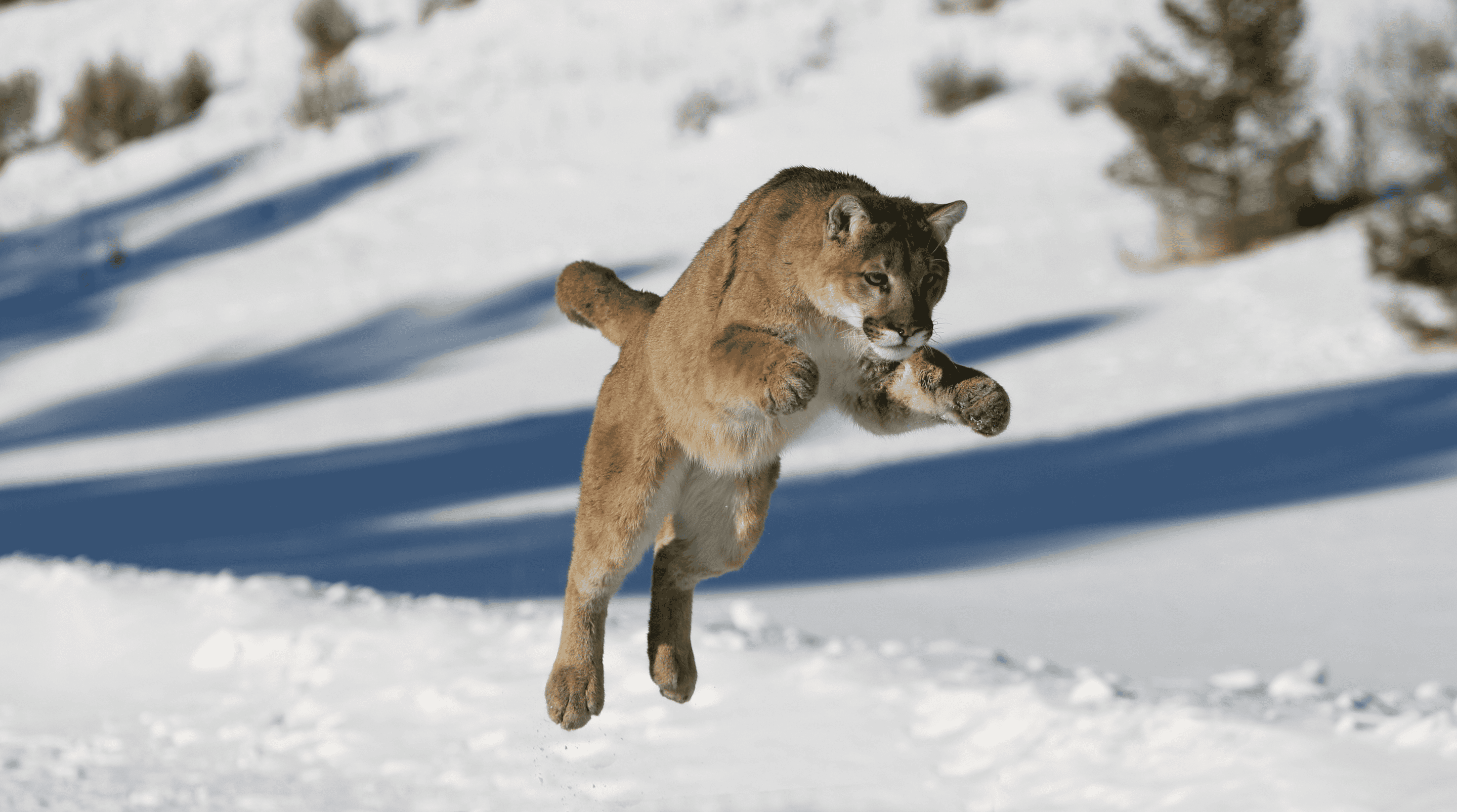
Mating, Reproduction, and Lifespan
Most females will have a litter once every two to three years. They will raise the cubs on their own. The average size of a litter is two cubs, ranging from one to six. The cubs will leave their mother at around two years of age. In the wild, cougars live for about ten years. The lifespan of a captive cougar can be as long as 20 years.
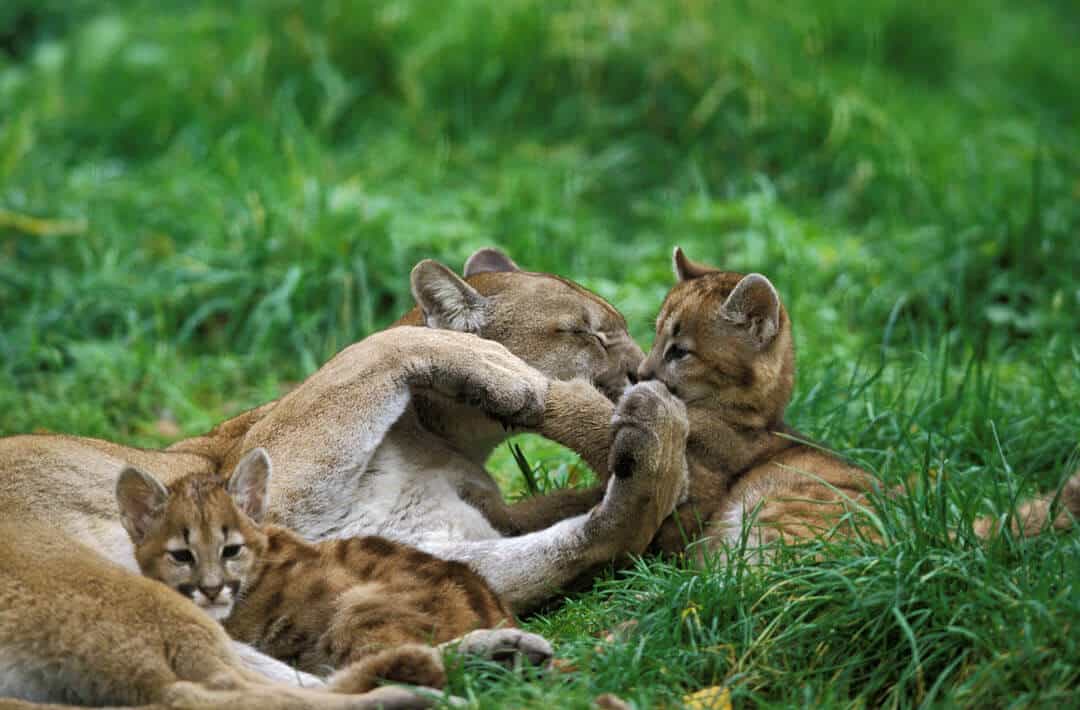
Cougar Conservation
Conservation issues for cougars include habitat loss, poaching, loss of prey, fragmentation, hunting, and vehicle kills in the case of the Florida panther. Humans are the only species that prey on cougars.
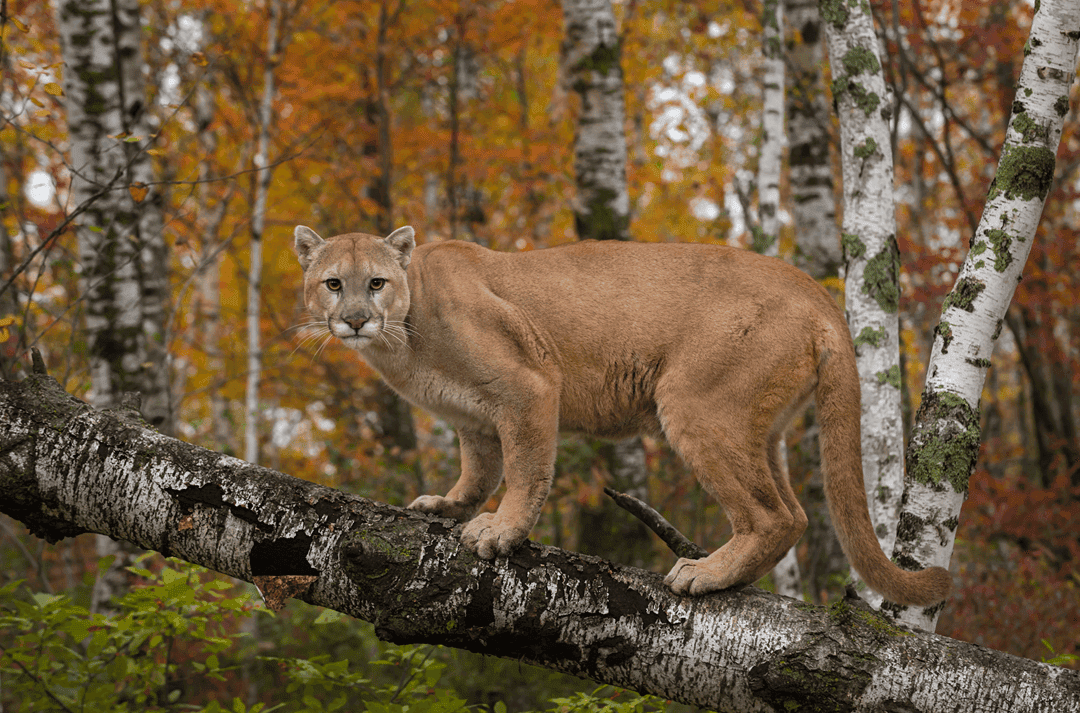
Cougars in Culture
Cougars are part of the culture of many different indigenous tribes throughout South and North America. They also appear in Apalachian folklore.
Inca
The Inca were South American indians. They ruled an empire that extended from the Pacific coast to Chile. The cougar (called puma) was an animal revered for its strength, agility, wisdom and patience. It guided people on spiritual journeys, and was associated with Viracocha, the sky and thunder god.
Pumas are also part of the Inca trilogy – their belief that the world was divided into three realms – Hanan Pacha (where the gods resided), Kay Pach were humans resided and Uku Pacha (the underworld). The puma represented Kay Pacha.
It is believed the Incas designed the city of Cusco, the capital of the Inca Empire, in the shape of a puma.
Native American
Many North American tribes have their own cougar names and folklore. Some tribes believed seeing a cougar or hearing its screams was a bad omen, while others considered cougars noble animals with powerful hunting skills.
The Zuni tribe of New Mexico and Arizona called pumas “Long Tail” and considered them powerful hunters and guardians of the north.
The Hopi of Arizona considered cougars the spiritual guardians of their tribe.
The Caddo, a Native American tribe that lived in the southeastern and south-central United States, believe that at one time men and animals were brothers and lived together underground. There are many folktales involving cougars that portray them as strong and agile hunters.
Appalachia
The Appalachian region is located in central and southern sections of the Applachian Mountains in the eastern United States. Cougars like the Wampus cat and ghost cat appear in Appalachian folklore. The Wampus cat is a legendary animal that is part woman and part mountain lion. The ghost cat is another name for the Eastern cougar. Because of overhunting, the eastern cougar is presumed to have disappeared from the area.
Research Quotes
“Mountain lions once occurred throughout Texas, but today their distribution is limited to the southern and western portions of the state.” – 2012 Ecology of Mountain Lions in the Davis Mountains: Assessing Impacts on Prey Populations | Thompson, Harveson, et al.
“Cougars (Puma concolor) are apex predator with their remaining northern core range constricted to mountain landscapes and areas of western North America; however, cougar populations have recently started rebounding in several locations across North America, including northward in boreal forest landscapes…the relative activity of native prey, predominantly snowshoe hare (Lepus americanus), was the best predictor of cougar occurrence at this range edge. Small‐bodied prey items are particularly important for female and sub‐adult cougars and may support breeding individuals in the northeast boreal forest.” – 2024 Native prey, not landscape change or novel prey, drive cougar (Puma concolor) distribution at a boreal forest range edge | Gaston, Barnas et al.

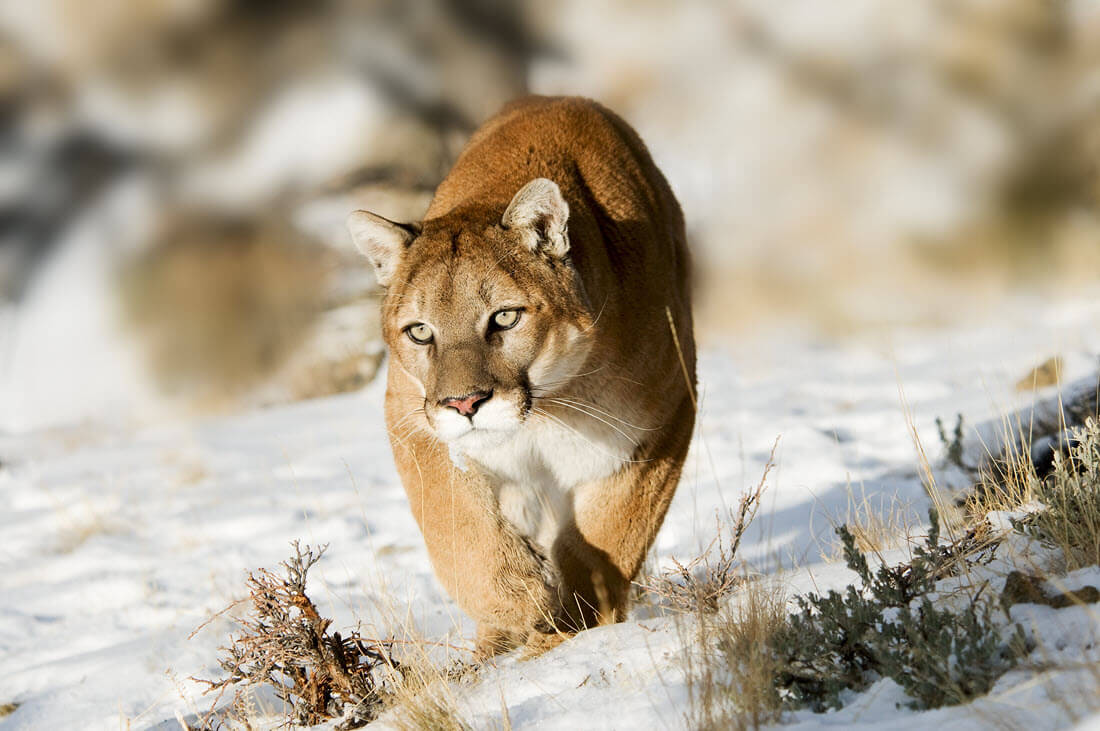
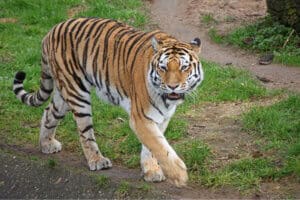
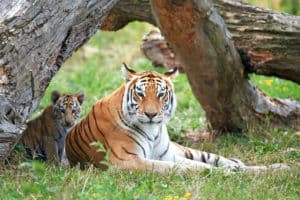
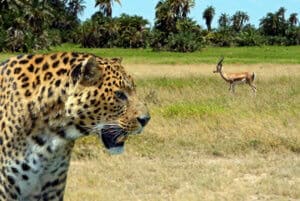

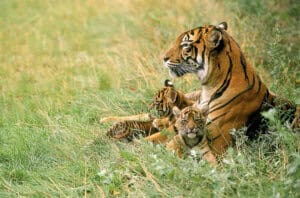
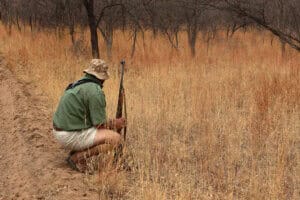
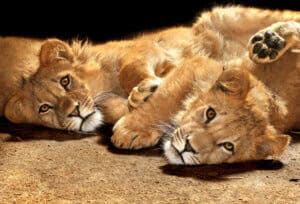
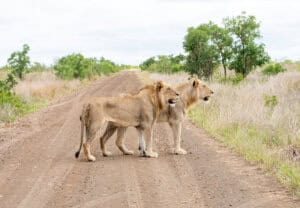
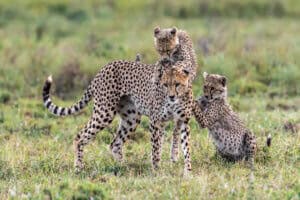


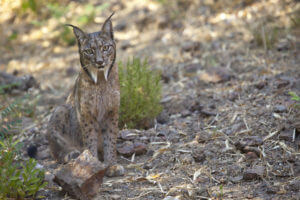




Hi Lara,
There is an expanded definition of “big cats” that we use that includes the cheetah and cougar. And you are right, when some people talk about big cats, they only mean the ones that roar – lions, tigers, jaguars and leopards.
Best,
Rebecca
Cougars are actually in the small cat classification. Big and small cats are not classified by body size, rather primarily by their ability (or lack there of) to either roar or purr. (There are a few other characteristics as well but roar vs purr is the primary distinction). They are the largest member of the small cats. They cannot roar and do purr.
I just saw came across fresh tracks on a dirt road in northern Florida Sept 20, 2022.
Aww the video is adorable! SO CUTE!
Hey there trying to identify an animal I have seen in humboldt area hunting it’s a mountain lion looking animal little more slim though also has the last foot of his tail is stripes beautiful cat but haven’t identified it yet
Thanks Red